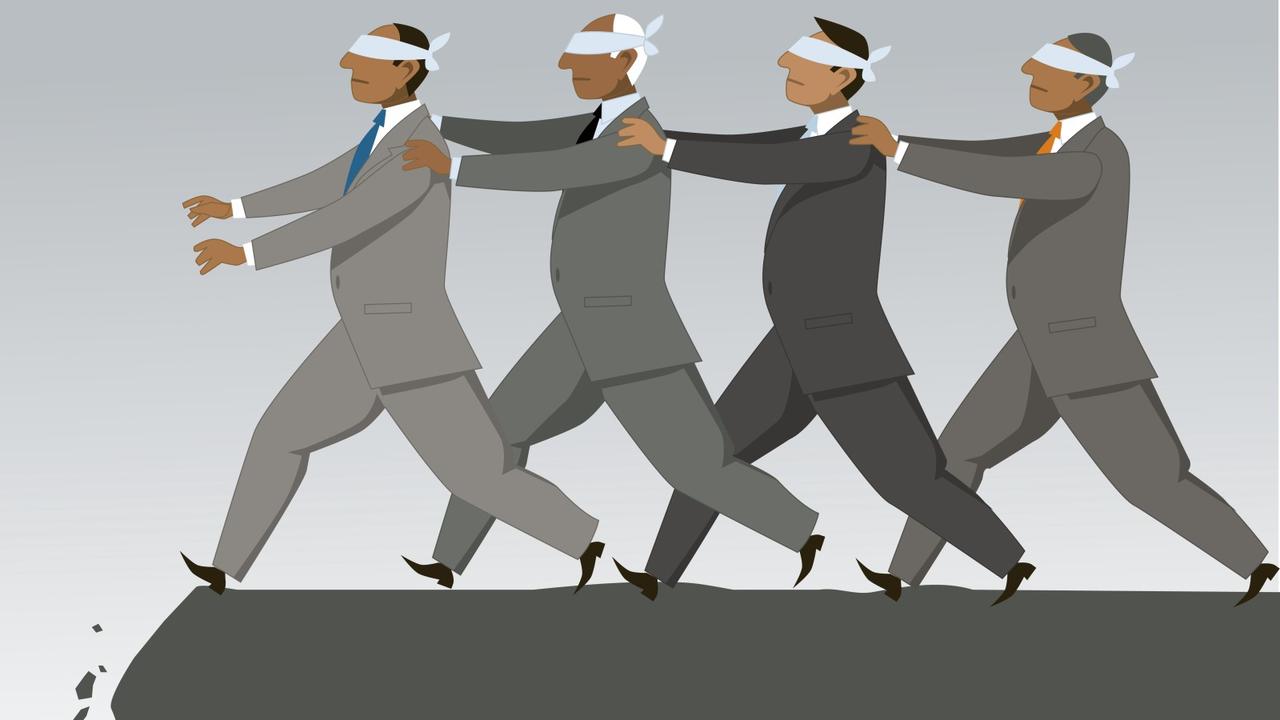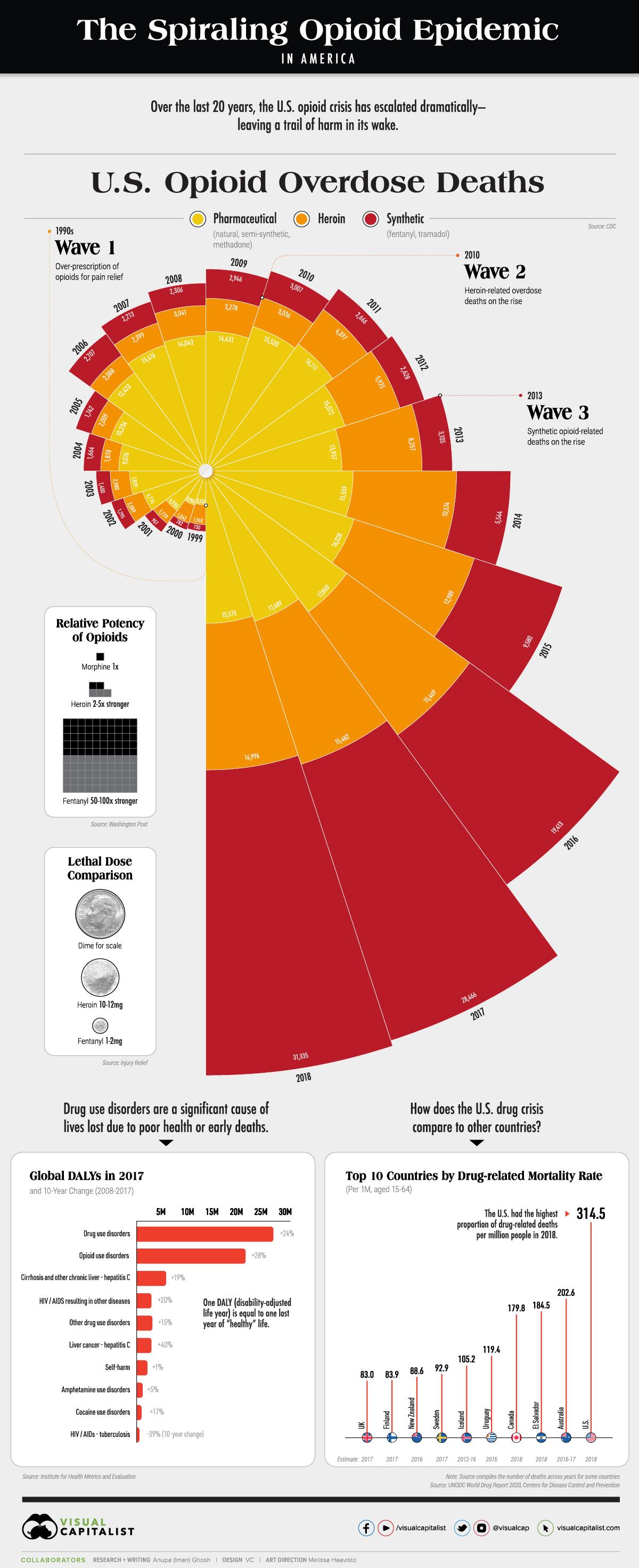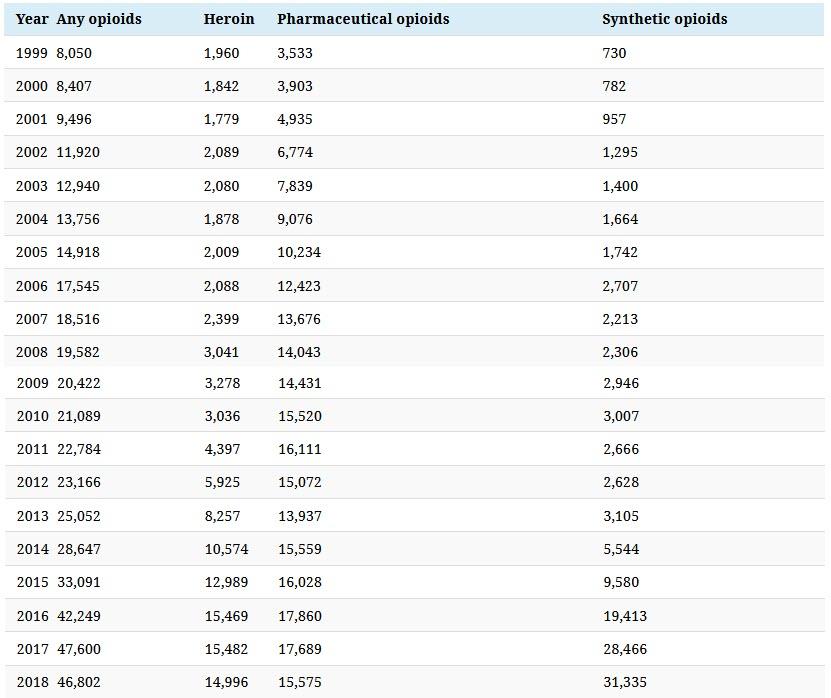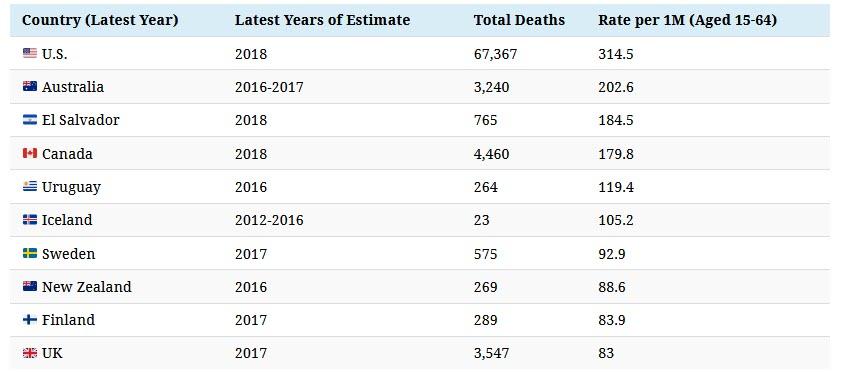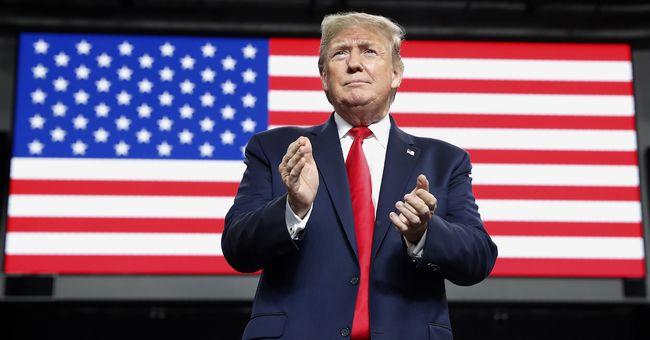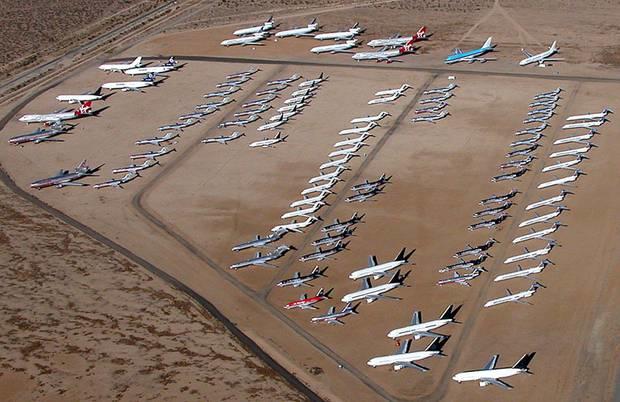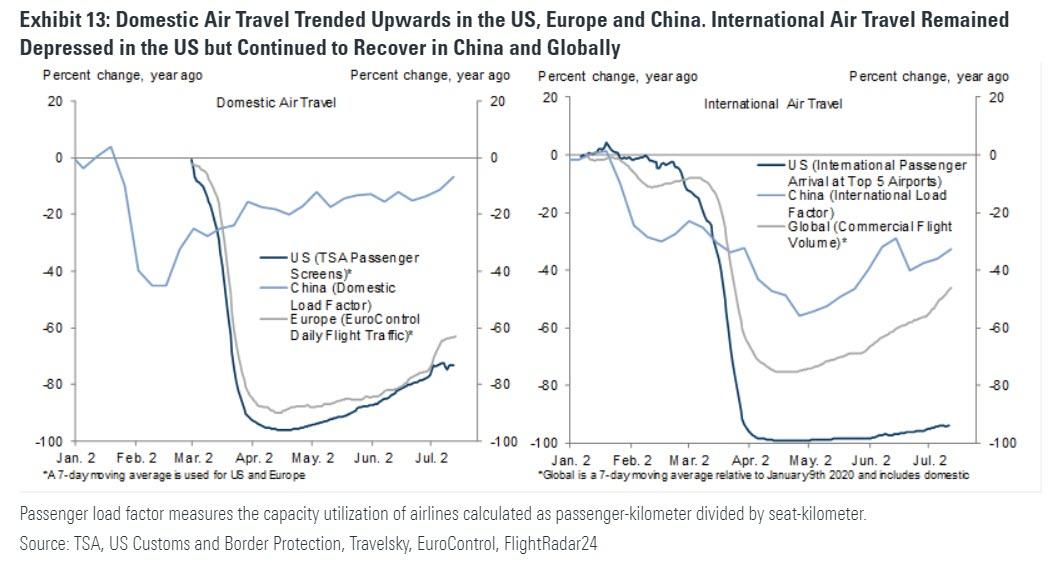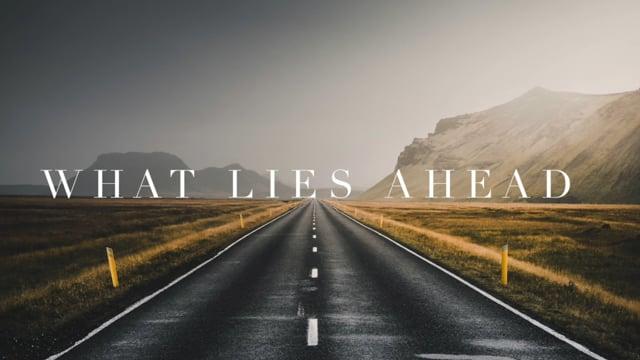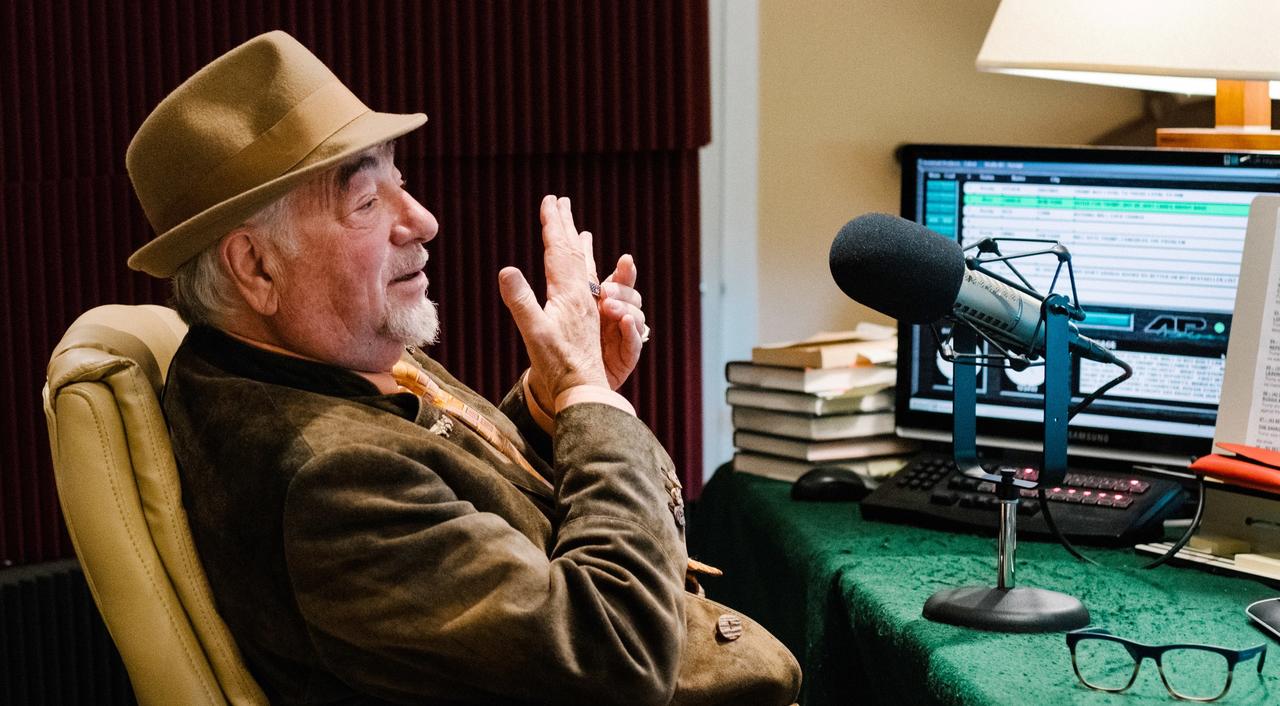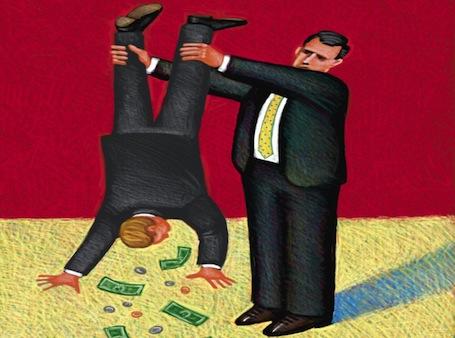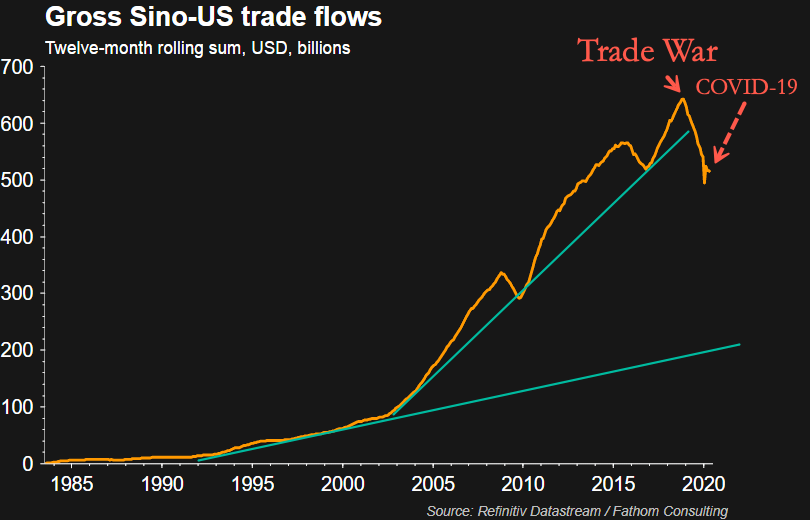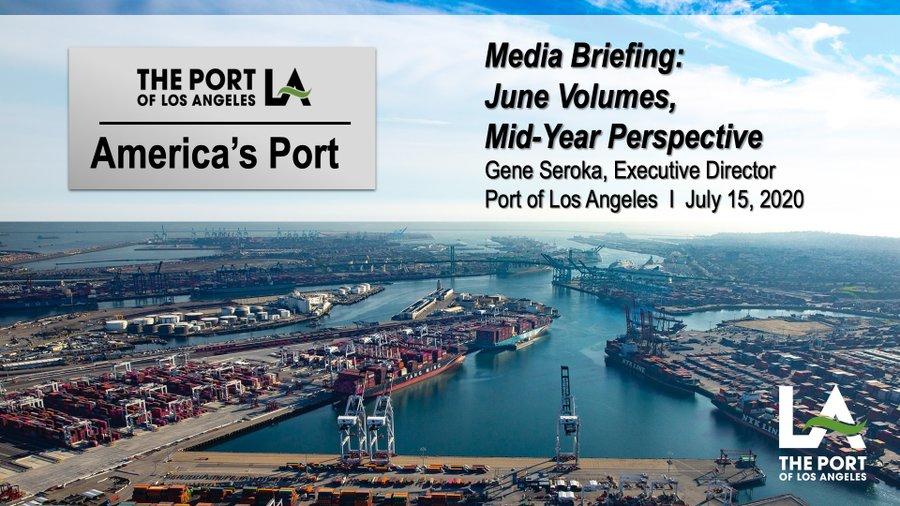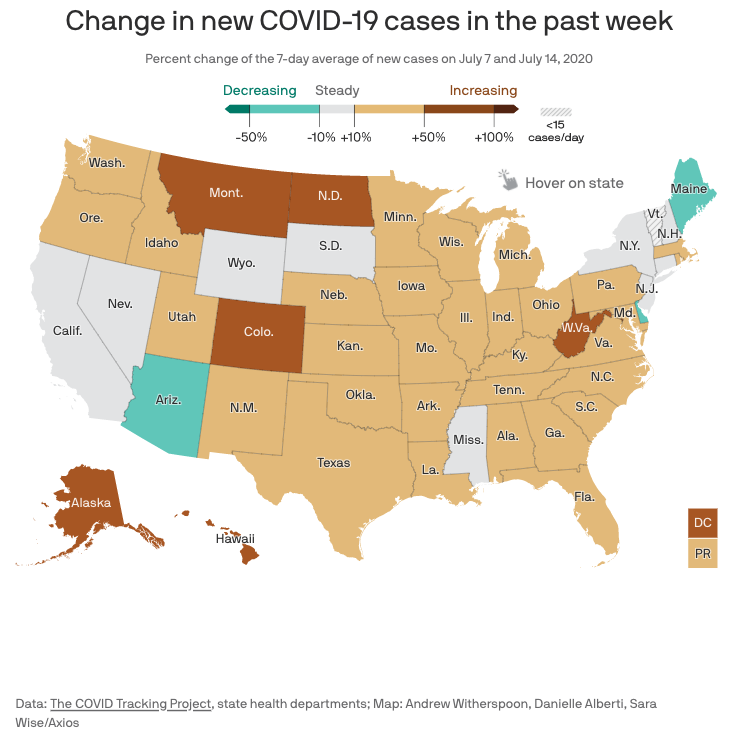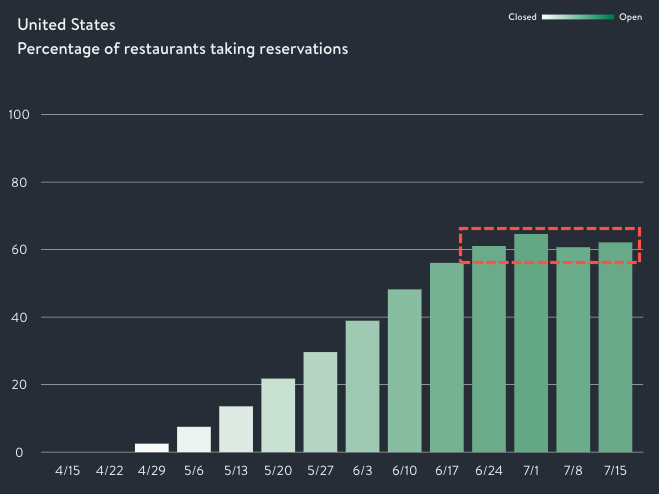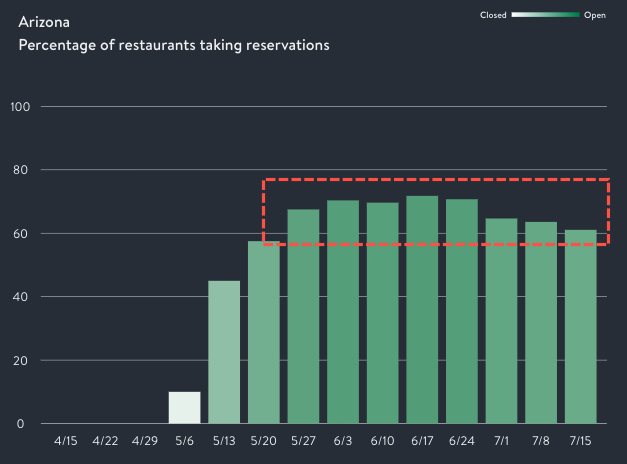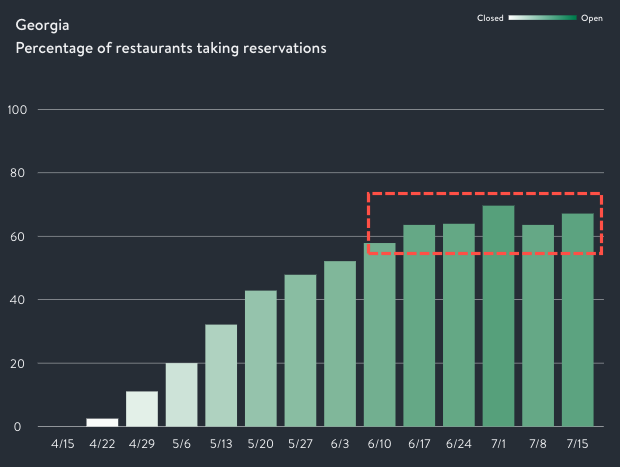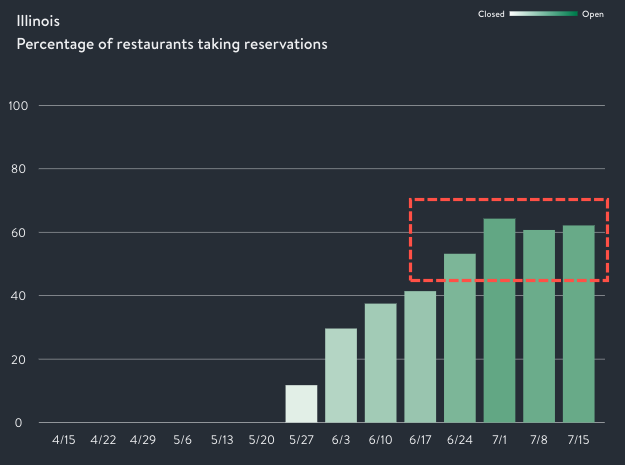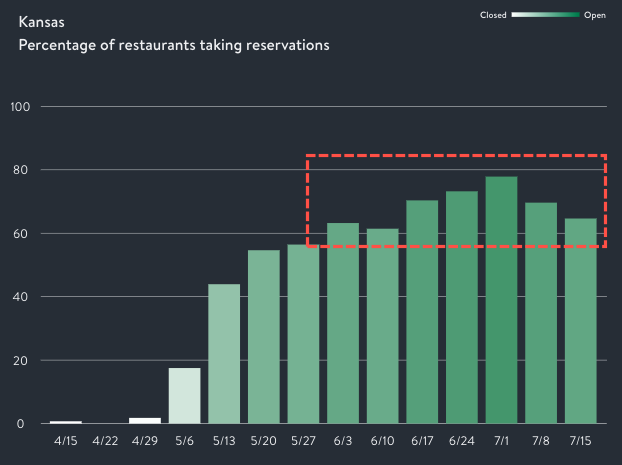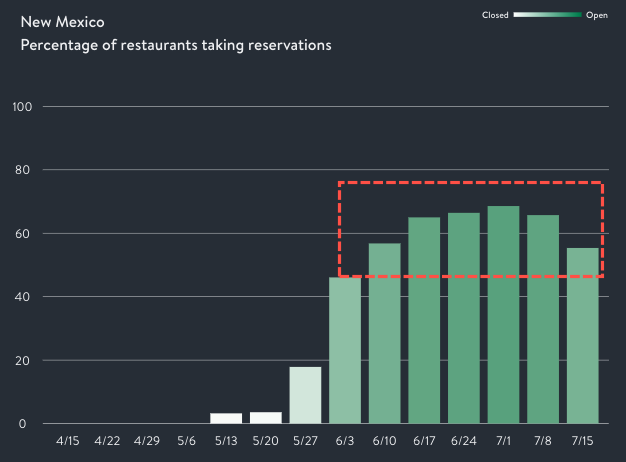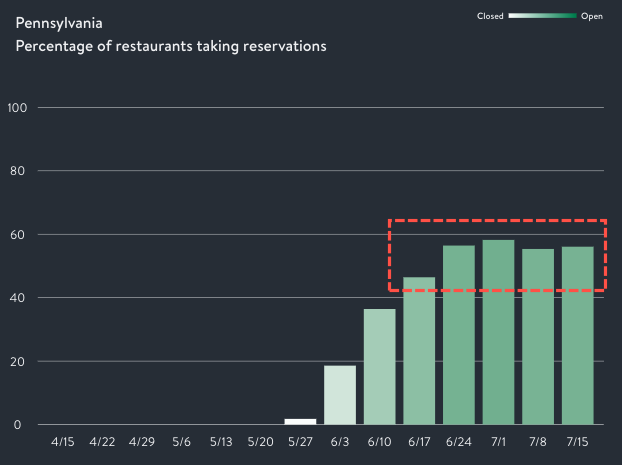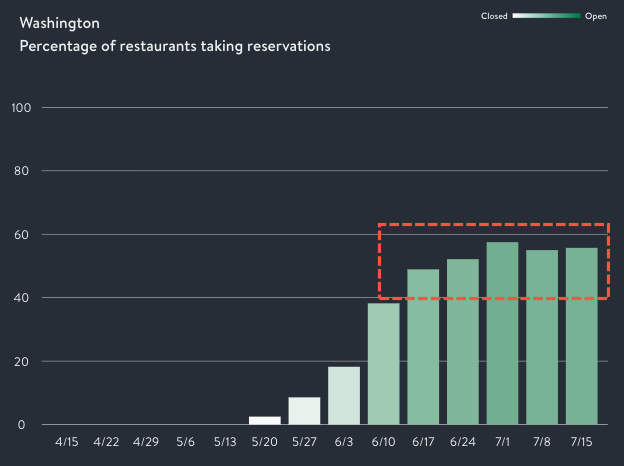Media Mask-Mania, Or COVID-19 Groupthink
Tyler Durden
Sun, 07/19/2020 – 23:30
Authored by Michael Lesher via Off-Guardian.org,
I never thought I’d see the day when publicly wearing a muzzle would constitute a proof of virtue in the same country whose government, less than twenty years ago, rationalized the bloody invasion of Afghanistan as a way of saving women from veiling their faces.
But then, I never thought I’d hear American liberals proudly denounce supporters of the US Constitution as a “death cult,” nor that I’d actually start to find Donald Trump sounding almost reasonable.
But at least there’s one thing we can all be sure about: “mainstream” news media, busily cheerleading for the death of freedom, will continue to gush with absurdities, self-contradictions and victim-shaming memes in their propaganda war to Keep America Gagged. The Bill of Rights (in case you haven’t noticed) is history; today, we demonstrate our patriotism by creeping around hiding our faces. Dissenters need not apply.
If you think I’m exaggerating, I suspect you haven’t been paying attention. Recently I had the poor judgment to turn on National Public Radio for about an hour, under the impression that I was going to learn something about the day’s news.
I could have saved myself the trouble. During the hour in question, I learned nothing at all about the presidential election campaign (now in its final months), nothing about the tens of millions of my fellow citizens whose jobs have been snatched away by government fiat, nothing about climate change, nuclear arms buildups, international refugees or growing worldwide poverty – nothing even about the intensification of air and water pollution authorized by recent federal regulation, although pollution kills an estimated 100,000 Americans every year.
No – for a solid hour, I heard the following: that COVID19 – in reality, at most, a moderately serious flu virus – is the worst medical threat the United States has ever faced; that this “deadly” virus (the word “deadly” was repeated obsessively, even though the disease is fatal in a tiny percentage of cases) has been empowered by a conspiracy of Republican politicians serving the arch-demon Donald Trump; that recent data showing the rapid decline in deaths attributable to the virus may have been faked, because the numbers aren’t what the “experts” want them to be; and that a massive increase in COVID19 tests – primarily among people between 20 and 40 years of age who are subjected to swabbing because their employers demand it, not because they’re in any danger – cannot possibly have anything to do with a rise in the number of reported infections, and that anyone who dares to suggest otherwise is “putting lives at risk.”
But the real theme of the hour was masks, masks, masks: how to make them, how to wear them, their different types, who doesn’t seem to have enough of them, and why muffling our faces (even though no such thing was ever demanded of us during dozens of past viral outbreaks) is absolutely, positively good for us all.
I waited in vain for some mention of the fact that every single order requiring the wearing of muzzles in the US is probably unconstitutional, a matter that National Public Radio – which once prided itself on its legal affairs reporting – might have been expected to care about.
Nor did anyone mention that just a few months ago, the Center for Disease Control and Prevention was explicitly advising against a general mask-wearing regime, as was Anthony Fauci, the High Priest of COVID19.
No, facts would only have complicated matters. After all, we already knew what good little boys and girls were expected to do with those muzzles. At the close of each weather forecast, just in case anyone had missed the point, the reporter said cheerily, “And when you go out – put on a mask.” “And drink milk with every meal,” I half expected him to add, but I guess self-conscious condescension would have spoiled the effect.
Put on a mask.
In well over half a century, I cannot remember a weather report that ended with a brisk piece of non-meteorological advice, let alone a patently silly one – after all, if these magical masks were to make any difference, their greatest usefulness would have been at the beginning of the outbreak, not on its heels.
Yet throughout March, while police-state fever prompted the suspension of democracy in some 40 states and most of the US population was being hustled into virtual house arrest, the pro-incarceration crowd’s loudest voices unanimously insisted that masks were of no practical value.
For anyone who has forgotten, Fauci told 60 Minutes that:
[t]here’s no reason to be walking around with a mask. When you’re in the middle of an outbreak, wearing a mask might make people feel a little better and it might even block a droplet, but it’s not providing the perfect protection that people think it is. And often there are unintended consequences – people keep fiddling with the mask and they keep touching their face.”
That was how things stood when the epidemic was new and all stops were out. And now? Contemplating the lockdown-lovers’ belated fetish for surgical gear, one can only imagine the US Navy ceremoniously issuing an air-raid warning at Pearl Harbor a hundred days or so after the Japanese attack had wiped out much of the fleet.
But you’ve got to hand it to the mask-maniacs. No matter how many of their excuses for muzzling the population go the way of the Great Auk, they keep the new ones tumbling out so fast you can hardly keep track.
Here’s one peddled on July 14 in the Los Angeles Times: even though the masks won’t really prevent infection, they may reduce the amount of the virus you breathe in – that is, just in case you happen to come across an infected person who somehow manages to breathe into your (masked) face from a very short distance and for an extended period. (No one cited in the article bothers to discuss how often such a scenario is likely to occur.) According to a Dr. Monica Gandhi:
[t]here is this theory that facial masking reduces…disease severity.”
In other words, you’ll get COVID19 with or without a mask, but the effects will probably be milder if you muffle your face.
But wait a minute – even if “this theory” is correct (note that it contradicts everything the propagandists have been telling us about masks for the last three months), wasn’t it always the case that the overwhelming majority of those who catch COVID19 have very mild symptoms, or no symptoms at all?
So what’s the big advantage of the mask? The article is silent on that point – and Dr. Gandhi herself ultimately admits that her “theory” remains unproven. But that doesn’t stop the Times from lambasting a few local California officials who have raised inconvenient questions about mandatory muzzling.
“This anti-mask rhetoric is mind-blowing, dangerous, deadly and polarizing,” the article quotes Dr. Peter Chin-Hong as responding. Why? Because masks prevent infection? No. Because they save lives? No. Criticizing the muzzle mandate is “deadly” because – wait for it – because:
[t]here is no evidence that [wearing a mask] is dangerous.”
Well, actually, there is such evidence; Anthony Fauci admitted as much to 60 Minutes in March.
But the main problem with this retort is that it misses the point: people are being forced to mask their faces in public without any evidence that it’s dangerous not to.
Dr. Chin-Hong’s implicit confession that this is so knocks the stuffing out of the mandate – and the Times’ rationale. But to say so openly is “dangerous, deadly [there’s that favorite adjective again] and polarizing.” It’s no accident that the symbol of submission currently in vogue is one that covers the mouth. The real message of the mask-maniacs is that we have no right to say what we think.
And speaking of “polarizing,” what about the personal viciousness to which mask-mania so frequently descends? I have lost track of the number of videos circulated by so-called news outlets that depict frustrated shoppers losing their cool over being forced to dress like mummies.
Apparently this is supposed to be cute – as in, “Get a load of that stupid, Trump-supporting bitch having a public meltdown.” Myself, I feel sorry for these people; I share their exasperation, and I empathize with them over the invasion of their privacy.
As for the propagandists who peddle Schadenfreude in support of governors-turned-dictators – I indict them as heartless hypocrites, who claim to value our collective welfare and prove it by publicly humiliating their victims. Would they take similar pleasure, I wonder, in mocking the reaction of a black shopper who’d just been called “nigger”?
And it gets worse. In the upside-down world of COVID19 media values, even death is no protection from victim-shaming. Recently, American news organizations “reported” the death of an Ohio man who had the misfortune to die on July 4 of what they gleefully called “complications of COVID-19.”
More than two months earlier, the victim had posted a comment on social media saying he wasn’t going to “buy a mask.” The articles – which even named the deceased (a combat veteran) – practically salivated over the fact that he had had the audacity to go to a swimming pool in mid-June, where he may have contracted the virus. You see? screamed the reporters’ moralizing subtext. The maskless, self-indulgent right-wing bastard got what he deserved!
Just for the record, let me note that there are a number of things we don’t know. We don’t know whether the poor man actually wore a mask or not. (He wrote in late April that he didn’t intend to buy one, but that’s really not the same thing.) We don’t know how he actually caught the virus. We don’t know whether he could have been saved with better treatment; it’s even possible he waited too long to seek medical help.
Given his youth and the apparently lightning pace of his descent into serious illness, his death from COVID19 is so highly unusual that its medical significance amounts to another thing we don’t know.
Most important, we don’t know whether wearing or not wearing a mask had anything at all to do with his death. (If he was infected while at a swimming pool, I doubt even the mask-maniacs would insist that he should have worn it in the water.)
What we do know is that he was targeted for savage personal attacks after he died, first on social media and now in the press.
“[P]eople have come out of the woodworks, posting nasty, hateful comments about a man they knew nothing about,” one of his friends has said. “Most of it crossed the line into harassment. When reported to Facebook, nothing was taken down nor was there ANY action taken,” he added, while “[t]hose that defended [him] faced consequences from Facebook in way of bans.”
Well, at least the pattern of the propaganda makes sense, in a way: slander the nonconformist and you can get away with murder; defend him, you’re silenced.
Even the New York Times’ resident faux progressive, Michelle Goldberg, has taken up the cry. Another “Trump fan,” she sniffed on July 14, has become a “macabre cliché” by dying of a disease she blames him for contracting.
I wonder whether Ms. Goldberg would be smirking about a woman who was raped some two months after posting a comment to the effect that “I’ll go wherever I want and dress however I like.” My guess is that the analogy hasn’t occurred to her; she knows her job, and it’s about propaganda, not consistency.
And the propaganda’s bottom line is as clear as it is grim. Forget about your personal liberties. Forget about the democracy you thought you were living in. The mask – the symbol of fear, of arbitrary rule, of the abolition of normal social life, of voiceless submission – isn’t going away any time soon.
Nor is the police state that sponsors it.
“There’s going to be no summertime lull with a big wave in the fall,” says Eric Toner, one of the boffins of the Johns Hopkins Center for Health Security, a partner of the neoliberal American Enterprise Institute that has been instrumental in promoting lockdowns from the start.
It’s clear that we are having a significant resurgence of cases in the summer, and they’ll get bigger. And it’ll keep going until we lock things down again.”
And how long before the cycle of incarceration really ends? “[S]everal years,” Toner says blandly, adding the sinister afterthought that people who resist being muzzled “will get over it.… It’s just a question of how many people get sick and die before they get over it.”
Makes you feel kind of warm and protected, doesn’t it? Thank heaven people like Toner know our needs so much better than we do.
The media ubiquity of the Johns Hopkins Center for Health Security is another ominous feature of the current wave of propaganda.
Last October, the Center ran a coronavirus pandemic “simulation” in New York City – cosponsored by the World Economic Forum and the Bill and Melinda Gates Foundation – for an assembly of powerful people in business and government, after which its members openly speculated about the possible need for “censoring social media content” on the theory that “[m]isinformation and disinformation are likely to be serious threats during a public health emergency.”
These facts obviously bear on the organization’s motives and credibility, at the very least. But you won’t hear them mentioned when the Center’s data are repeated as fact in mainstream media, nor when its members assure us that if we don’t wear masks for the next two years we’ll all drop dead.
Is it unreasonable to hope that reporters might want to explore why “health security” is presumed to entail censorship? Or whether the huge investment of the Gates Foundation in vaccine development has any influence on its partner organization’s bleak predictions for escaping the coronavirus without a new vaccine? Or whether, having insisted first on devastating lockdowns and now on worthless face masks, the Center will use its political leverage to demand mandatory vaccination when the time comes?
Professor Lawrence Gostin is another worrisome presence in the media, including Michelle Goldberg’s recent sanctimonious outburst in the New York Times – where, pretending to describe the consequences of the virus, she catalogs the devastation of the lockdowns instead:
[A] record 5.4 million people lost their health insurance between February and May. A generation of American kids will have their educations derailed, and many parents who don’t lose their jobs due to the economic crisis will see their careers ruined by the demands of child care
[…]
The psychological consequences alone will be incalculable. Even before the coronavirus, researchers spoke of loneliness as its own epidemic in America. A March article in the medical journal JAMA Psychiatry attributed 162,000 deaths a year to the fallout of social isolation. Now people are being told that they can socialize only under the most stringent conditions. Much of what makes life sweet is lost to us, not for days or weeks, but months or years.
As I said, this is a chillingly accurate summary of the consequences of the mass incarceration foisted on us by more than 40 state governors, most of them Democrats, beginning in early March – when each one, with a unilateral declaration of a “health emergency,” seized quasi-dictatorial powers, shunted aside the Constitution and bankrupted the citizenry. Those “emergency” powers have not been relinquished to this day.
But neither Goldberg nor her hero, Professor Gostin, offers a single word of criticism for any of those governors, and certainly not for the Democratic Party leadership that has backed this democracy-destroying, economy-wrecking madness at every step. For them, everything is the exclusive fault of one man: Donald Trump.
Coming from Goldberg, that might be just another election-year screed against an incumbent the Times dislikes. But what about Gostin? Well, although Goldberg never mentions it, Professor Gostin just happens to be the author of the model version of the Emergency Health Powers Act, the adoption of which in all fifty states (if in somewhat different versions) made possible the coup the governors pulled off by claiming “emergencies” several months ago.
It’s worth remembering that Gostin’s proposed bill was sharply criticized by the American Civil Liberties Union back in 2001 as “replete with civil liberties problems” and “a throwback to a time before the legal system recognized basic protections for fairness.”
In fact, some of its specific objections to the EHPA deserve quoting at length, in light of where the Act’s reckless application has brought us today:
-
It fails to include basic checks and balances. The Act would grant extraordinary emergency powers, but that kind of authority should never go unchecked. Public health authorities make mistakes, and politicians abuse their powers…The lack of checks and balances could have serious consequences for individuals’ freedom, privacy, and equality. The Act lets a governor declare a state of emergency unilaterally and without judicial oversight, fails to provide modern due process procedures for quarantine and other emergency powers…and contains no checks on the power to order forced treatment and vaccination.
-
It goes well beyond bioterrorism. The act includes an overbroad definition of “public health emergency”…that clearly do[es] not justify quarantine, forced treatment, or any of the other broad emergency authorities that would be granted under the Act.
-
It lacks privacy protections. The Act requires the disclosure of massive amounts of personally identifiable health information to public health authorities, without requiring basic privacy protections and fair information practices…. That not only threatens to violate individuals’ medical privacy but undermines public trust in government activities.
It’s not hard to see why Ms. Goldberg is reluctant to give us the accurate back story for her star witness. The ACLU’s list of warnings about the potential abuses of the law Gostin drafted is a near-perfect précis of what has actually happened: unilateral declarations of an “emergency,” state by state, where none really existed; the seizure by each governor of almost unlimited power to order quarantines and forced vaccinations; the elimination of “due process” restrictions on mass confinement; the dismantling of privacy protections along with basic rights.
I don’t intend to sing the praises of the ACLU, which – like so many other liberal institutions in the US – has been missing in action since the actual coup began last March. But no one can deny the prescience of its critique. And Goldberg knows her readers aren’t stupid: once they are aware of the role Gostin played in orchestrating the overthrow of their freedoms, they’re not likely to grant him the pied piper status Goldberg wants him to have.
Why does she cite Gostin? First, to “prove” – like Eric Toner in another context – that the COVID19 outbreak, the current excuse for the denial of our liberties, will last another two years; amazingly, Goldberg claims this while insisting simultaneously that the same outbreak is practically over in New Zealand, Taiwan and Italy after just a few months.
But she also needs him to explain, albeit in somewhat indirect language, why democracy isn’t good for us.
According to Gostin, the coronavirus has proved that “health system capacity alone is almost useless unless you have a government that can unleash that capacity promptly and consistently.” Obviously, we can’t do that if we have to bother with pesky constraints like representative government or the public will. And from Gostin’s perspective, we’ve been dabbling in the utopianism of democracy for too long as it is: “It’s going to take several years for us to be able to come out of all of the trauma that we’ve had,” he warns.
And I think that suggests the real message Goldberg and the other propagandists are keen on peddling. They didn’t do this to us. It’s not that we’ve been lied to and illegally confined. It’s not that our state executives have defied their oaths of office. It’s not that their media mouthpieces have offered us one swindle after another: lockdowns, business closings, job losses, muzzling, scare-mongering, the destruction (as Goldberg herself admits) of “much of what makes life sweet” – theater, cinema, public discussion, time shared with friends.
The problem is us. We’ve been clinging to dreams of freedom – and that will cost us. The lockdown-lovers are going to punish us for our wrongheaded attachment to notions of individual rights, and they will punish us still more for continuing recalcitrance. But note this: they can only get away with it by selling us one more lie – namely, that what they’re doing to us is really the work of a disease beyond anyone’s control.
“The coronavirus is a natural disaster,” Goldberg writes.
No, it isn’t.
The coronavirus is just another flu. The real disaster has been the work of human beings. Resisting it must be, too.
via ZeroHedge News https://ift.tt/3eLnzqO Tyler Durden
